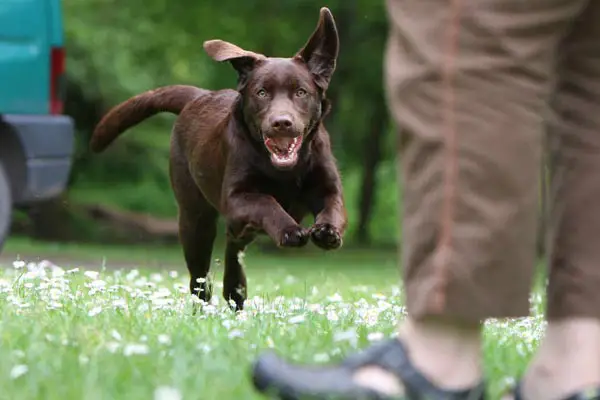Professional Guide to Biking With Dogs in the United States
Biking with dogs is an exciting adventure that allows you to explore the great outdoors while spending quality time with your furry companion.
Whether you prefer scenic coastal paths, majestic mountain trails, or urban routes, you can find a dog-friendly biking experience that suits your preferences.
These trails provide a fantastic opportunity for you and your furry friend to enjoy the outdoors and stay active together.
Essential Gear for Biking With Dogs
When biking with your dog, having the right gear to ensure your safety and your dog’s comfort is crucial. Some essential equipment includes:
- Dog Goggles: Protect your dog’s eyes from the elements with specially designed goggles that provide UV protection and shield against debris.
- Skin-tight Equafleece: Keep your dog warm during colder rides with a snug and insulating Equafleece designed to offer maximum comfort and freedom of movement.
- Arcadia Trail High Visibility Pet Raincoat: Ensure your dog stays visible and protected from rain with a raincoat that repels water and keeps them dry.
- Sturdy Harness: Invest in a reliable harness that securely fits your dog and provides better biking control. Look for features like padded chest plates and reflective strips for added safety.
- Bungee Leash: Opt for a bungee-style leash that absorbs shock and prevents sudden jolts, reducing the risk of injuries during the ride.
Having the right gear will enhance your biking experience with your dog, ensuring their safety, comfort, and enjoyment throughout the journey.
Selecting the Right Dog Gear
Choosing the right gear for your dog’s biking adventure is essential. Consider their breed, size, and unique needs when selecting equipment. For example, larger breeds may benefit from sturdier harnesses, while smaller dogs may require a more lightweight and adjustable option.
Additionally, pay attention to temperature conditions and weather forecasts to choose appropriate accessories like cooling vests or boots for extreme climates. Prioritize safety and comfort to ensure a pleasant and secure biking experience for you and your dog.
| Essential Gear | Benefits |
|---|---|
| Dog Goggles | Protects eyes from debris and UV rays |
| Skin-tight Equafleece | Keeps dogs warm during colder rides |
| Arcadia Trail High Visibility Pet Raincoat | Ensures visibility and protection from rain |
| Sturdy Harness | Provides control and prevents injuries |
| Bungee Leash | Absorbs shock and reduces strain |
Choosing the Right Dog for Biking
When considering bringing your dog along for a biking adventure, it’s essential to consider their age, size, and fitness level.
Fitness Level
Before introducing your dog to biking, assess their fitness level. Puppies and senior dogs may not have the stamina or physical capabilities to handle the exertion of biking.
Medium to large working dogs with high energy levels, such as huskies and border collies, are more suitable for biking activities.
For smaller breeds, it’s essential to assess their capabilities on an individual basis. Focus on building their endurance through regular walking and jogging before considering biking.
Size and Health
Dogs that are too small may struggle to keep up with the pace of biking or may become easily fatigued. Additionally, certain breeds may be prone to health issues that the physical demands of biking could exacerbate.
Temperament and Training
Consider your dog’s temperament and training when deciding if they are suitable for biking. Dogs that are easily distracted or have difficulty following commands may pose a safety risk while biking.
Your dog must listen to basic commands such as “sit,” “stay,” and “come” before embarking on a biking trip. Proper training and socialization are crucial to ensuring a safe and enjoyable experience for you and your dog.
| Criteria | Suitable Dogs |
|---|---|
| Size | Medium to large breeds |
| Fitness Level | High-energy working dogs |
| Temperament | Well-trained and focused dogs |
Training Your Dog for Biking
Here are some training tips to help you prepare your furry friend for biking:
1. Start with Basic Commands
Before introducing your dog to biking, ensure they have a solid foundation in basic obedience commands. Teach them commands like “watch me,” “stop,” “wait,” and “slow.” These commands will help you communicate with your dog and maintain control during the ride.
2. Get Your Dog Familiar with the Bike
Gradually introduce your dog to the Bike to help them acclimate to its presence. Start by allowing them to sniff and investigate the Bike while it’s stationary. Gradually progress to short walks with the Bike, rewarding your dog for calm behavior. This will help them associate positive experiences with the Bike.
3. Practice Short Rides
Start with short biking sessions to build your dog’s stamina gradually. Begin with a few minutes of riding, then gradually increase the duration. Monitor your dog’s behavior and energy levels during the ride. Take breaks and provide plenty of fresh water to keep your dog hydrated.
Finding Dog-Friendly Bike Trails
To make the most of your biking adventures, you must find dog-friendly bike trails that cater to your and your dog’s needs. The United States offers a wide range of trails perfect for biking with dogs, providing scenic views and opportunities for outdoor exploration.
Benefits of Dog-Friendly Bike Trails
When searching for dog-friendly bike trails, consider the benefits they offer. These trails are designed to accommodate bikers and their four-legged companions, ensuring a safe and enjoyable experience.
Dog-friendly trails often provide rest areas and water sources to keep them hydrated during the ride. These trails are well-maintained and clearly marked, minimizing the chances of getting lost.
Researching Local Parks and Outdoor Recreation Areas
Research your local parks and outdoor recreation areas to find dog-friendly bike trails. Many cities and towns have designated trails suitable for biking with dogs. Look for trails that specifically mention their dog-friendly policies or allow leashed dogs.
Online resources, such as city or state park websites, can provide valuable information about these trails, including trail maps, difficulty levels, and amenities available along the way.
Considerations for Dog-Friendly Bike Trails
Some trails may be more challenging, featuring steep inclines or uneven terrain. If your dog is new to biking, starting with easier trails and gradually increasing the difficulty as they build stamina is advisable. Additionally, ensure that the trail allows dogs on leashes, as some may have specific rules or restrictions regarding pets.
| Trail Name | Location | Distance | Level of Difficulty | Notes |
|---|---|---|---|---|
| Paw’s Path | City Park, XYZ | 5 miles | Easy | Dog waste stations available along the trail |
| Tailwaggers Trail | County Park, ABC | 8 miles | Moderate | Scenic views of the lake |
| Rover’s Run | State Park, DEF | 12 miles | Difficult | Elevation changes and rocky terrain |
Safety Tips for Biking With Dogs
Biking with your furry friend can be a fun and exhilarating experience. Still, it is essential to prioritize safety to ensure a smooth and enjoyable ride for you and your dog. Here are some important safety tips to keep in mind:
1. Use proper equipment: Invest in a sturdy harness and a leash attachment that provides control and prevents accidents. Ensure the leash length is appropriate to avoid getting tangled in the Bike. Consider using a reflective collar or vest to increase visibility, especially during low-light conditions.
2. Monitor weather conditions: Avoid biking during extreme weather conditions such as high heat, humidity, or heavy rain. These conditions can be dangerous for your dog and may lead to heatstroke, dehydration, or injuries. Keep an eye on the forecast and plan your rides accordingly.
3. Pay attention to your dog’s energy levels: Dogs have different endurance levels, so it’s essential to be attentive to any signs of fatigue or discomfort. Take breaks when needed, and provide plenty of water to keep your dog hydrated. Remember to start with shorter rides and gradually increase the duration to build their stamina over time.
Additional Safety Tips:
- Always obey traffic rules and signals, and use hand signals to communicate with other cyclists or pedestrians.
- Choose bike trails suitable for dogs and familiarize yourself with the trail rules and regulations.
- Keep your dog on a leash and under control at all times to avoid incidents with other cyclists, wildlife, or pedestrians.
- Carry a basic first aid kit for both you and your dog, including bandages, antiseptic solution, and any necessary medications.
- Please keep your dog’s vaccinations current and consider carrying a copy of their vaccination records in emergencies.
| Tip | Description |
|---|---|
| 1 | Use proper equipment |
| 2 | Monitor weather conditions |
| 3 | Pay attention to your dog’s energy levels |
Dog-Friendly Bike Carriers
A dog bike carrier can be a fantastic solution for those who prefer not to have their dogs running alongside them while biking. These carriers provide a safe and comfortable space for your furry friend to enjoy the ride while allowing you a hands-free biking experience.
When selecting a dog bike carrier, it’s essential to consider your dog’s size and weight, as well as their comfort and safety.
There are various types of dog bike carriers available on the market. One popular option is a bike trailer specifically designed for pets. These trailers feature a sturdy construction, proper ventilation, and stability to ensure a smooth ride for your dog.
Some even come with additional features like sunshades and rain covers to protect your furry friend from the elements.
Another type of dog bike carrier is a front-mounted basket or bag that attaches to the handlebars of your Bike. These carriers allow you to watch your dog closely during the ride and provide a secure space for them to sit or lie down comfortably.
They are typically designed for smaller dogs and may have weight restrictions, so check the specifications before purchasing.
Comparing Different Dog Bike Carriers
| Carrier Type | Pros | Cons |
|---|---|---|
| Bike Trailers |
|
|
| Front-Mounted Baskets/Bags |
|
|
Biking Etiquette and Etiquette Tips
Clean Up After Your Dog
One of the most critical aspects of biking with your dog is cleaning up after them. Always carry waste bags and promptly dispose of your dog’s waste in designated bins. This keeps the trail clean and shows respect for fellow bikers and the environment.
Keep Your Dog on a Leash
For the safety of your dog and others, keeping your dog on a leash at all times while biking is crucial. This helps maintain control and prevents potential incidents with other bikers, hikers, or wildlife. Remember to choose a leash length that allows your dog to run alongside you comfortably without risking tangling with your Bike.
Respect Rules and Regulations
When biking with your dog, familiarize yourself with the rules and regulations of the bike trail or park you visit. Some areas may have designated areas for dogs, specific hours for dog-friendly activities, or leash requirements. By respecting these guidelines, you can ensure an enjoyable and safe experience.
Give Others Space
When passing by fellow bikers, hikers, or even other dogs, giving them ample space is essential. Slow down and announce your presence, allowing others to react accordingly. Respecting the comfort and safety of others on the trail helps create a harmonious environment for all outdoor enthusiasts.
FAQ
What gear do I need for biking with my dog?
Essential gear for biking with your dog includes dog goggles, skin-tight Equafleece, the Arcadia Trail High Visibility Pet Raincoat, a sturdy harness, and a bungee leash.
Are all dogs suited for biking?
Not all dogs are suited for biking. It is essential to consider your dog’s age, size, and fitness level before taking them on a biking adventure.
How should I train my dog for biking?
Start by introducing your dog to the Bike and gradually increasing their exposure. Teach them basic commands and build their stamina slowly with short rides.
Where can I find dog-friendly bike trails?
Research local parks and outdoor recreation areas to find dog-friendly bike trails that cater to bikers and their canine companions.
How can I ensure the safety of my dog while biking?
Use a sturdy harness and leash attachment, avoid extreme weather conditions, monitor your dog’s energy levels, and be attentive to signs of fatigue or discomfort.
What are some alternatives if my dog can’t run alongside my Bike?
A dog bike carrier, such as a bike trailer specifically designed for pets, can be a great alternative for dogs who can’t run alongside a bike.
How should I bike with my dog responsibly?
Clean up after your dog, keep them on a leash and under control, respect the rules and regulations of the bike trail or park, and consider the comfort of others on the trail.



